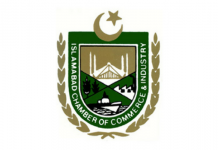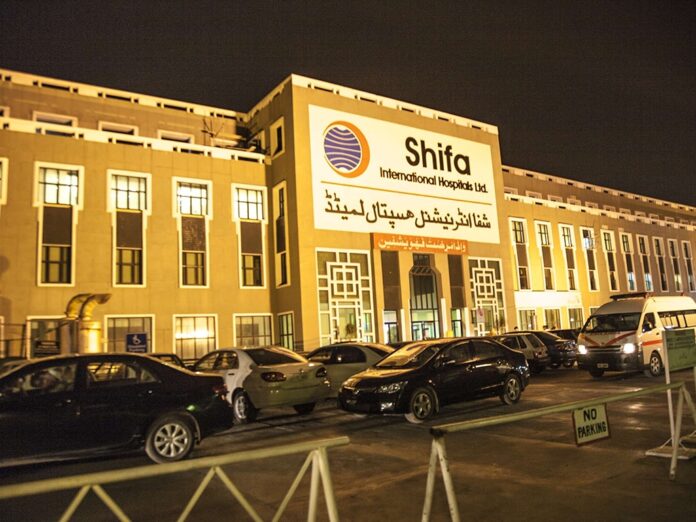A massive public health emergency like a pandemic, it turns out, is bad for business if you own and run a hospital. Shifa International Hospitals, Pakistan’s only publicly listed hospital company, said that it estimates it lost as much as Rs1,370 million in revenue owing to the pandemic, which led people to cancel or postpone surgical procedures as well as other necessary medical services.
“The [company’s] earnings have been negatively affected owing to the Covid-19 pandemic as surgical procedures have reduced (particularly liver transplants). This resulted in a significant decrease, amounting to Rs1.37 billion in the revenues for fiscal year 2020. This loss is attributable to decreased number of diagnostics and other procedures,” said a research note issued by Topline Securities, an investment bank, sent to clients on Wednesday, October 28, 2020.
The decline hit the company’s business almost across the board. The number of visits to its outpatient department declined by about 17% compared to the same period last year, whereas inpatient visits declined 9% compared to the same period in the previous year. The only major departments not affected were ones that offer services to patients who cannot defer treatment: radiology and oncology, which both serve cancer patients whose treatments cannot be paused even in a pandemic.
The hospital chain also saw a steady stream of sales for its pharmacy business, which people are much more comfortable using, given the relatively short periods of time they would need to interact with anyone in order to purchase their medications.
The one major bright spot for the hospital chain? Average revenue per occupied bed grew by 12% to Rs43,514 compared to the same period last year.
It is not as the year resulted in a drop in revenues, though the rise in revenues was meagre when compared to the rapid rise in inflation. The hospital chain’s total revenues increased to Rs12,152 million, just 3.4% higher than the previous year. And net income dropped by 35% to Rs505 million.
Management, however, appears confident that even if there is another spike in Covid-19 cases over the coming few months, they will be able to mitigate the impact on the hospital’s business, since they are now better prepared – with more safety precautions – to continue to handle pre-pandemic levels of patient traffic. The company’s management states that they are already back at approximately 90% capacity in their outpatient departments.
Meanwhile, Shifa continues to invest aggressively in its hospital infrastructure, in particular as a means of improving operational efficiencies. “For instance, a new [magnetic resonance imaging] MRI machinery, can now run tests in 15 minutes rather than a normal test run time of 45 minutes,” wrote the analysts at Topline Securities.
In addition to improving its main hospital in Islamabad, the company is also expanding its geographic footprint, with a 250-bed hospital expected to come online in Faisalabad over the next three years. Besides its domestic expansion, the company is also looking to open up hospitals overseas and is currently waiting on approval from the State Bank of Pakistan in order to open up a hospital in Tanzania.
Over the long run, however, the biggest tailwind for hospital companies like Shifa International is likely to come from the government’s decision to expand health insurance coverage to the poorest of Pakistanis who currently struggled to be able to afford to pay for their own healthcare.
In Pakistan, the vast majority of healthcare costs are paid for out-of-pocket by private individuals. Yes, the government maintains public sector hospitals that provide free or very low cost healthcare to anyone, but those facilities tend to be overcrowded – and their staff underpaid and overworked – resulting in a poor quality of care offered.
According to Profit’s analysis of data from the Pakistan Bureau of Statistics (PBS) and the federal finance ministry, the federal and provincial governments’ combined spending on healthcare accounted for about 35.7% of total spending on healthcare in Pakistan in fiscal year 2019. When it comes to healthcare spending, most Pakistani know that they are on their own, with not much assistance coming from the government.
And while most of the government’s spending on healthcare does go to the poor (mostly because anyone who can afford private sector healthcare prefers that over the public sector), the quality differential between what low-income families can afford, and what middle class and upper income people can afford is tremendous.
Recently, however, the government has expanded its Sehat Insaf health insurance program to now cover close to 21% of households in Pakistan. Here is how the Sehat Insaf program works: for low-income Pakistanis – as identified in a variety of government surveys to document poverty and income levels – the government of Pakistan will provide a health insurance plan.
The Sehat Insaf program will cover up Rs600,000 per year per family (Rs300,000 defined as ‘initial coverage’ and another Rs300,000 as ‘additional coverage’) for high-cost hospital procedures, and up to Rs120,000 per family per year for other types of hospital-based healthcare coverage.
By providing health insurance to the bottom 21% of families (a number that may rise as the program expands), the government is achieving two policy goals: improving access to quality private sector care to those who are currently locked out of it by price, while at the same time reducing overcrowding (and therefore, potentially improving quality) at the public sector healthcare facilities.
What does this mean for the healthcare sector? Well, if you are the owner or operator of any type of healthcare facility – hospitals, health clinics, diagnostic laboratories – all of a sudden, about 21% of the population that previously could not afford your services now have the ability to afford them. That is an expansion of your market that is only likely to grow as the Sehat Insaf program expands nationwide.
More people who can afford these services means more revenue for all sorts of healthcare providers, though the biggest benefit is likely to go to hospitals, since the largest number of services covered are those provided by hospitals.


























Once upon a time, Shifa had good treatment and doctors actually cared about patients. This used to be when there was just a single building.
Now, it is just a grubby money making machine where patients are forced to do frivolous tests from Shifa’s own labs. Everything is too robotic and too expensive whereby patients are extorted for money. Plus for many decades, they haven’t been able to successfully sort inadequate parking space issues.
The cost factor is the reason, medical treatment and interventions are getting more expensive then what a common man can afford, he will not seek or delay treatment till absolutely necessary to avoid cost, i think private health care can only work with state sponsored health insurance.